 Last additions - eBook Library Last additions - eBook Library |
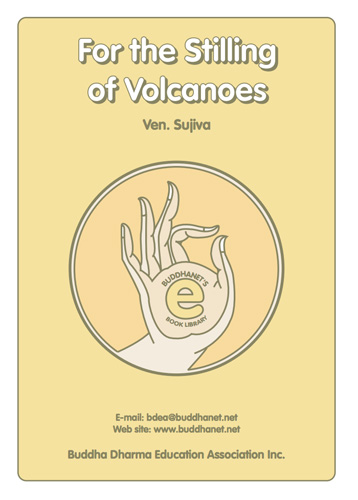
volcanos.pdfFor the Stilling of Volcanoes3282 viewsInsight Meditation as explained by Ven. Sujiva: It is not an task easy to approach such a profound topic as Insight Meditation in simple terms. But we have got to start somewhere. After some years of introducing this type of meditation, I still find that there is a lack of introductory material for those without knowledge of Buddhism. What is available is often extremely technical and loaded with ancient Indian terminology. There are some words in the English vocabulary which we can never hope to substitute perfectly. Even in this booklet I have used some English words such as 'conditioned' and 'suffering' which need special explanation when used in a Buddhist sense - but I have tried to come up with something easier to read and understand.Jan 01, 1970
|
|

03_seeing_the_elements.pdf03 Perceiving Impermanence4907 viewsPatrick Kearney
Perceiving impermanence. Discusses the centrality of the concept of impermanence (aniccata) to the Buddha's approach to insight, and explore the elements of earth, water, fire and air.Jan 01, 1970
|
|

02_contemplating_movement.pdf02 Contemplating Movement5305 viewsPatrick Kearney
Contemplating movement. Here we explore the nature of distraction and its relationship to the fact of change. This brings us to insight meditation, and incorporating movement into the practice. We begin walking meditation, and introduce the standing posture.Jan 01, 1970
|
|
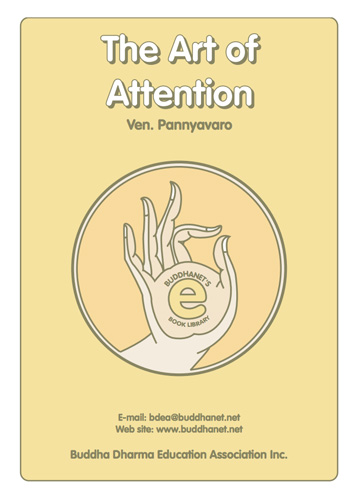
artofatt.pdfThe Art of Attention8547 viewsThis is a handbook on the art of meditative attention or meditating for insight. It deals with the basics of awareness meditation. There is practical instruction on how to do sitting and walking meditation and how to apply awareness in daily activities based on the Insight Meditation (Vipassana) tradition. The purpose of this handbook is to give the beginner to awareness meditation a guide to the basics of the practice, with the emphasis on its practical application to daily life.Jan 01, 1970
|
|
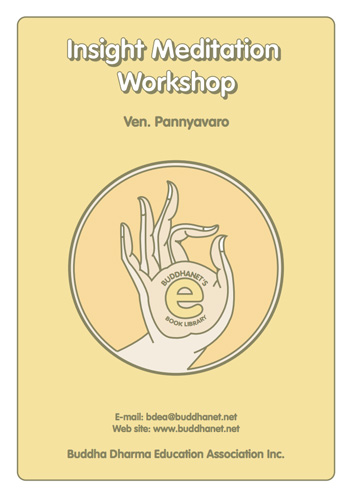
medwshop.pdfInsight Meditation Workshop Online4138 viewsMeditation is the intelligent heart of the Buddha's way; the only criterion is that you should apply it to daily life. The purpose of this meditation course is not to create a system of beliefs, but rather to give guidance on how to see clearly into the nature of the mind. In this way, you can have firsthand understanding of the way things are, without reliance on opinions or theories - a direct experience, which has its own vitality. This course has been prepared with both beginners and experienced practitioners in mind.Jan 01, 1970
|
|
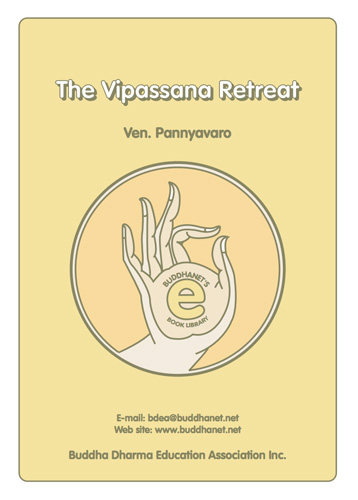
v_retreat6.pdfThe Vipassana Retreat3851 viewsVen. Pannyavaro
Vipassana meditation requires long-term commitment. While it can be done to some extent in everyday life, realistically for the practice to deepen it needs to be done intensively in a supportive retreat situation. Vipassana meditation is developmental, so to realise its ultimate benefit it has to be sustained with appropriate intensity under supportive conditions. Ven. Pannyavaro, a practitioner of over 30 years, guides you through the vipassana experience in a retreat situation, in a systematic and practical way.Jan 01, 1970
|
|

deathless.pdfMindfulness: The Path of the Deathless5329 viewsAjahn Sumedho
The aim of this book is to provide a clear instruction in and reflection on Buddhist meditation as taught by Ajahn Sumedho, a bhikkhu (monk) of the Theravadin tradition. It has been edited from talks Ajahn Sumedho has given to meditators as a practical approach to the wisdom of Buddhism. This wisdom is otherwise known as Dhamma or 'the way things are'. It is a step-by-step manual on the practice of meditation.Jan 01, 1970
|
|
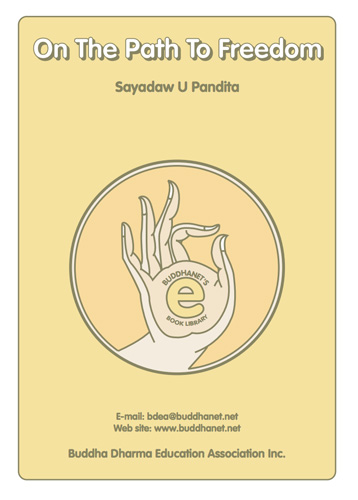
path-free.pdfOn The Path To Freedom4338 viewsOn The Path to Freedom - a mind of wise discernment and openness - by Burmese Meditation Master, Sayadaw U Pandita. This is a compilation of Dhamma discourses to foreign meditators at the Mahasi Meditation Centre, Rangoon, Myanmar, who came to practise under him in Yangon (formerly Rangoon) between August 1986 to March 1987. Translated from Myanmar by the late Mya Thaung.Jan 01, 1970
|
|
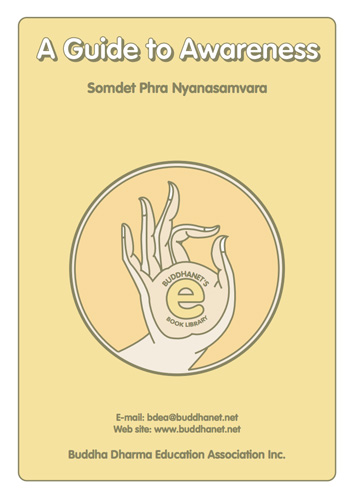
gawarens.pdfA Guide to Awareness5233 viewsThe Foundations of Mindfulness (Satipatthana Sutta). This is a series of twenty-two talks given at Wat Bovornives, Bangkok by H.H.Somdet Phra Sanasamvara, Supreme Patriarch of Thailand. The Four Foundations of Mindfulness is the Buddha's explanation of the practice of mindfulness meditation within the framework of four foundations of awareness: body, feelings, mind-states and the mental content. If you read this book, you will discover the truth of the 'knots' and problems that exist within you. In short, this can be described as the 'knot of suffering'. You may also then see the method to unravel and safeguard against this suffering.Jan 01, 1970
|
|
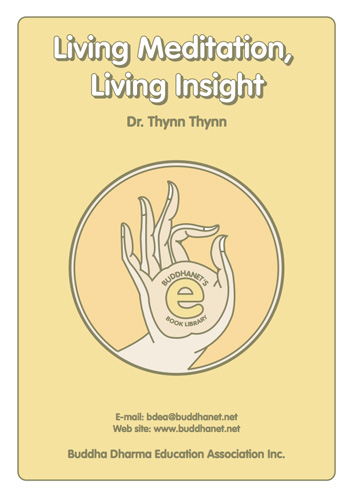
livngmed.pdfLiving Meditation, Living Insight5006 viewsI wrote this book to encourage practitioners learning to meditate in daily life. In this sense, the articles are presented as a hands-on or, more accurately, a minds-on training manual. Although I discuss meditation in general, the real focus is on how the Dhamma brings us into spontaneous, wholesome and creative living. My objective in presenting the articles is to help the aspirant build up a solid foundation of mindfulness as a way of life rather than as a practice separated from daily living - Dr. Thynn Thynn.Jan 01, 1970
|
|
| 347 files on 35 page(s) |
 |
 |
 |
31 |  |
 |
 |
|
